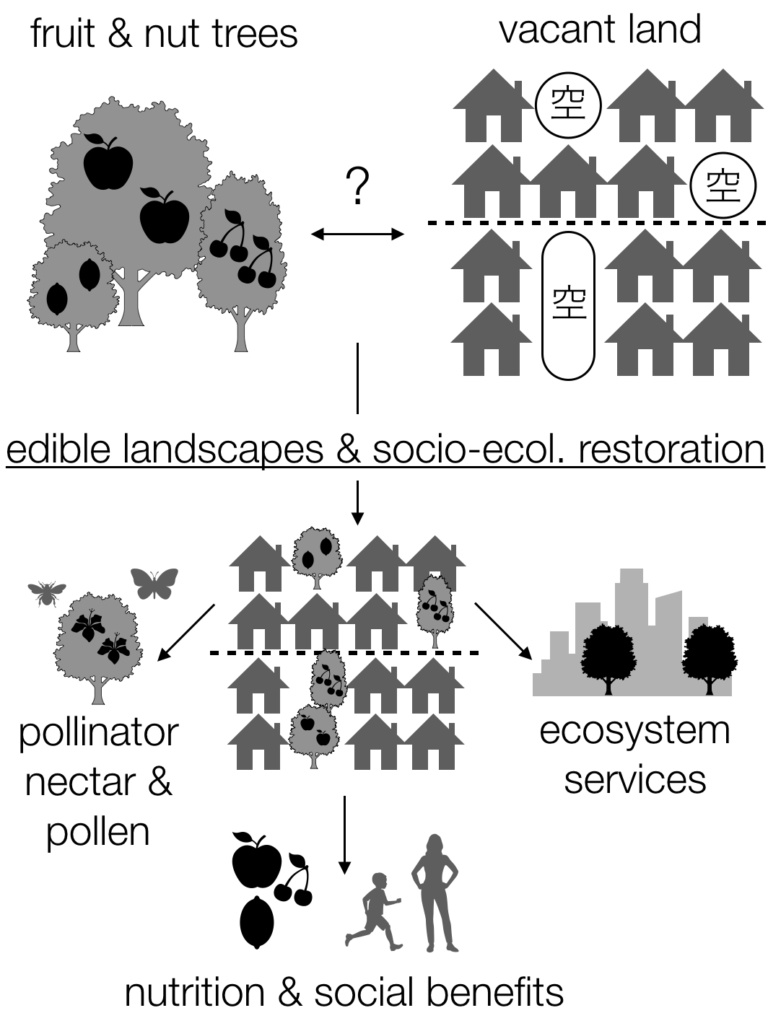Edible landscapes as multispecies commons
マルチスピーシーズ・コモンズとしてのエディブル・ランドスケープ

Starting from 2020, one project will look into the potential of edible landscapes as multispecies commons for socio-ecological restoration of vacant land in shrinking Japanese cities. Over 90% of Japanese cities larger than 100,000 inhabitants will shrink until 2045, leading to “spongification” and increased vacant land. Recent research on depopulation proposes that landscape and urban planning can use shrinking processes to provide social and ecological benefits. In particular, edible landscapes can benefit people and nature through providing spaces for multispecies conviviality. Together with research assistant Lihua Cui (Kyoto University), we look at Sapporo and Kyoto as case studies to assess what trees and bushes are best suited for different types of vacant land. Based on this analysis, we aim to create a toolkit to implement edible landscapes as multispecies commons to achieve a positive urban degrowth in shrinking Japanese cities. This research is funded by the Japan Society for the Promotion of Science with a three-year Grant-in-Aid for Young Scientists (2020-2022). Early results include our paper on edible urban commons for resilient neighbourhoods in light of the pandemic.
Food system mapping: urban agriculture, personal foodsheds, informal food
フードシステム・マッピング:都市農業、個人のフードシェッド、非公式な食

Research as part of the FEAST project. To promote transition to more sustainable agri-food systems, I aim to develop new ways to map existing and potential food systems. From precision mapping of urban agricultural land change processes to exploring personal foodsheds, food lifeworlds and tourist foodscapes, I combine quantitative and qualitative methods, including GIS, participant observation, interviews and participatory workshops. In a study mapping the transition of agriculture-related land use in Kyoto, we found that urban farmland decreased by about 10% from 2007-2017. This means Kyoto City is currently not well positioned to use its projected shrinking population to become more sustainable by relocalizing its food system. Other results suggest ecological footprint per capita rises with the size of cities. Recently, work on informal food practices has taken off, from mapping unmanned food sales stands to conceptual work on informality, food and sustainability.